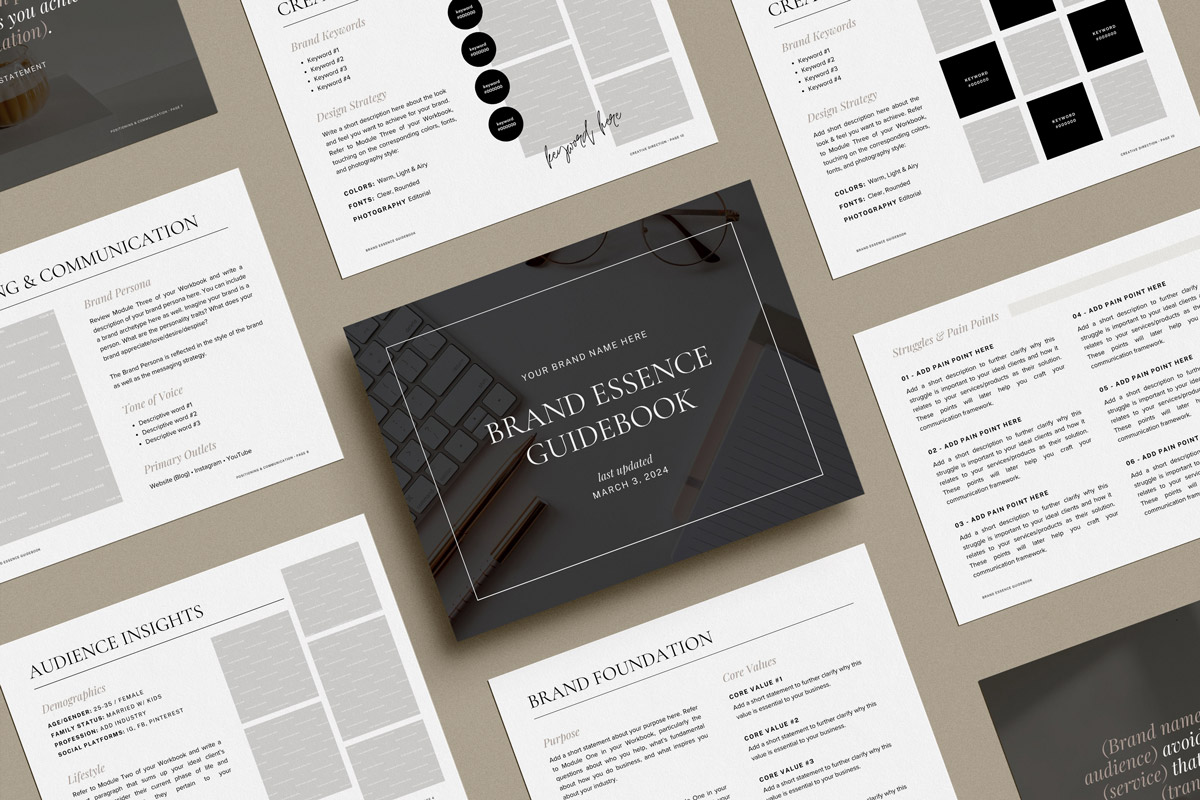Start attracting ideal clients to your business who truly value your expertise by avoiding these 7 mistakes.
We’ve all been there before. Losing out to the competition because a prospect felt a better connection with someone else. Trying to serve micro-managing clients who expect the moon and stars for pennies on the dollar. Needless to say, this is not the description you wrote down on that ideal client profile template you filled out, is it?
True, sometimes these situations are unavoidable and part of our growth as small business owners. But sometimes, they are the result of oversights that are in fact within our control.
So if you find that business is way too slow, or most of your projects leave you feeling frustrated and uninspired, read the rest of this article. You may be inadvertently repelling your target audience by making one of these mistakes.
Mistake #1: Not clearly defining your ideal client profile
Having a clear understanding of who your ideal clients are is a non-negotiable. You NEED these insights to build a solid brand strategy that shapes your messaging, design, and positioning. This means researching the clients you most want to serve, looking at things like demographics, lifestyle, and values. It also means understanding their desires and struggles as they relate to your industry.
Then, take these insights and actually build out a detailed persona (or client avatar) that represents the type of client or consumer you want to draw in. Without this clarity, you risk making the rest of the mistakes covered below.

Mistake #2: Vague messaging that doesn’t speak to audience
Your audience needs to clearly understand what you do and how you can help them BEFORE they will be willing to work with you. For example, look at the language you’re using. Are you using industry-specific terms that your ideal clients may not grasp? If your language is too generic, your ideal clients won’t realize that YOU are the perfect solution because they won’t realize you’re actually talking to them. Again, this goes back to having an ideal client profile in mind.
An easy way to check the clarity in your messaging is to ask a close friend (who has no experience in your field) to read through your website and social media content. If they can’t instantly tell who you help and how, you might need to simplify. Remember: clarity over cleverness.
Make things easy on your target audience. If they have to work too hard to understand how to work with you, they won’t. They’ll just keep scrolling.
Mistake #3: Lack of visibility
Maybe you’re missing out on new leads, simply because your audience isn’t hearing from you enough. Consistency is key, as well as showing up on the platforms where your ideal clients are hanging out and searching for solutions. The “right” platforms will look different for every business, depending on your target audience. For example, Pinterest is a great platform for wedding vendors to gain visibility because so many brides-to-be use it for gathering inspiration and planning their special day.
But I get it – staying consistent is hard when you don’t always know what to share. This is where having a communication framework as part of your overall brand strategy comes in handy.
Mistake #4: Weak branding that doesn’t resonate
Your branding is an extension of your client experience. It’s hard to attract high-end clients who are looking for a luxury experience when your brand design doesn’t exude those things. If your branding looks cheap, how can you expect to sell your product or service at a premium price? The same idea applies to any client profile that you want to attract. It should be reflected in your brand design.
Just like with your messaging strategy and visibility, consistency is important in design as well. Maintaining a cohesive, buttoned-up brand identity across multiple platforms builds trust and establishes credibility. On the other hand, constantly changing up colors, fonts, and the like can subtly undermine that trust you are working so hard to build.
So make sure to have a strong brand identity in place. A strong brand identity doesn’t start with a logo design or website. It starts with a solid brand strategy that helps you define the right look and feel for your brand in order to attract a specific audience.

Mistake #5: Not providing value to your target audience
Part of gaining clarity about your ideal client is understanding their struggles and why they would be looking for your solution in the first place. This in-depth study can uncover many ways to help them (both free and paid) on their journey.
That said, I encourage you to be generous with your knowledge! Share useful tips (or quick wins) with your audience that can alleviate some small pain point they are facing. Not only does this position you as the giving, knowledgeable expert in your field, but it also builds on your bigger offers. Draw in your ideals clients with helpful insights so they discover your brand as they search the internet for solutions.
You can share your expertise in a number of ways, such as blogging, YouTube videos, podcasts, on social media and more. Once again, find out where your ideal clients are spending their time and go share your wisdom there! Providing value = communicating YOUR value.
Mistake #6: Lack of social proof (aka testimonials)
Do you include client testimonials or product reviews on your website? If not, this could be a reason your ideal clients are hesitant to work with you / buy from you. Things like video testimonials, case studies, and embedded Google reviews can help build trust and increase conversion rates.
In fact, one study estimates that 92% of consumers read online reviews and testimonials when considering a purchase. That’s A LOT. Read 26 other fascinating statistics like this one on the power of testimonials here.
Don’t have reviews and testimonials on your website? Go add them…now! While you’re at it, be sure to make asking for client feedback a regular part of your workflow.
Mistake #7: Not embracing your differentiating qualities
Your Differentiating Qualities. Your USP – Unique Selling Position. Even in seemingly saturated markets, I believe every brand can find a small corner of the market to call their own. This is achieved through strategic positioning, one of the key pillars of establishing an impactful brand strategy.
Perhaps your ideal clients aren’t finding you because you’re blending in with the crowd. If you look and sound like everyone else, then it becomes easy to look for differences in price rather than value.
It’s ok for a personal brand to show some PERSONALITY. Groundbreaking, I know. So worried about appearing “professional”, small business owners often forget to let their personality shine through.
Your brand personality can be communicated through your unique messaging angle, tone of voice, or metaphorical language that connects to your brand story. It also shines through in your design. Fun patterns, original illustrations, and a unique brand color palette can all help you stand out from your competitors.
Positioning your business to attract more ideal clients is intimately tied to having an intentional brand strategy
When you’re not seeing the quality leads come in that you’d like, it’s time to re-evaluate and uncover what’s getting lost in translation. Hopefully, these seven points have given you practical insight into ways you can tighten up your business strategy to get your brand in front of the clients your most want to serve.
But so much of this hinges on CLARITY. Clarity about who you want to attract and how you want your brand to be perceived. Clarity about what sets you apart.
If you’re unsure how to define your target audience or position your brand, check out Design Aligned, the brand strategy course for small business owners and creatives. This mini course helps you not only gain the necessary clarity, but also teaches you how to translate that into an impactful design and messaging strategy for your business.
